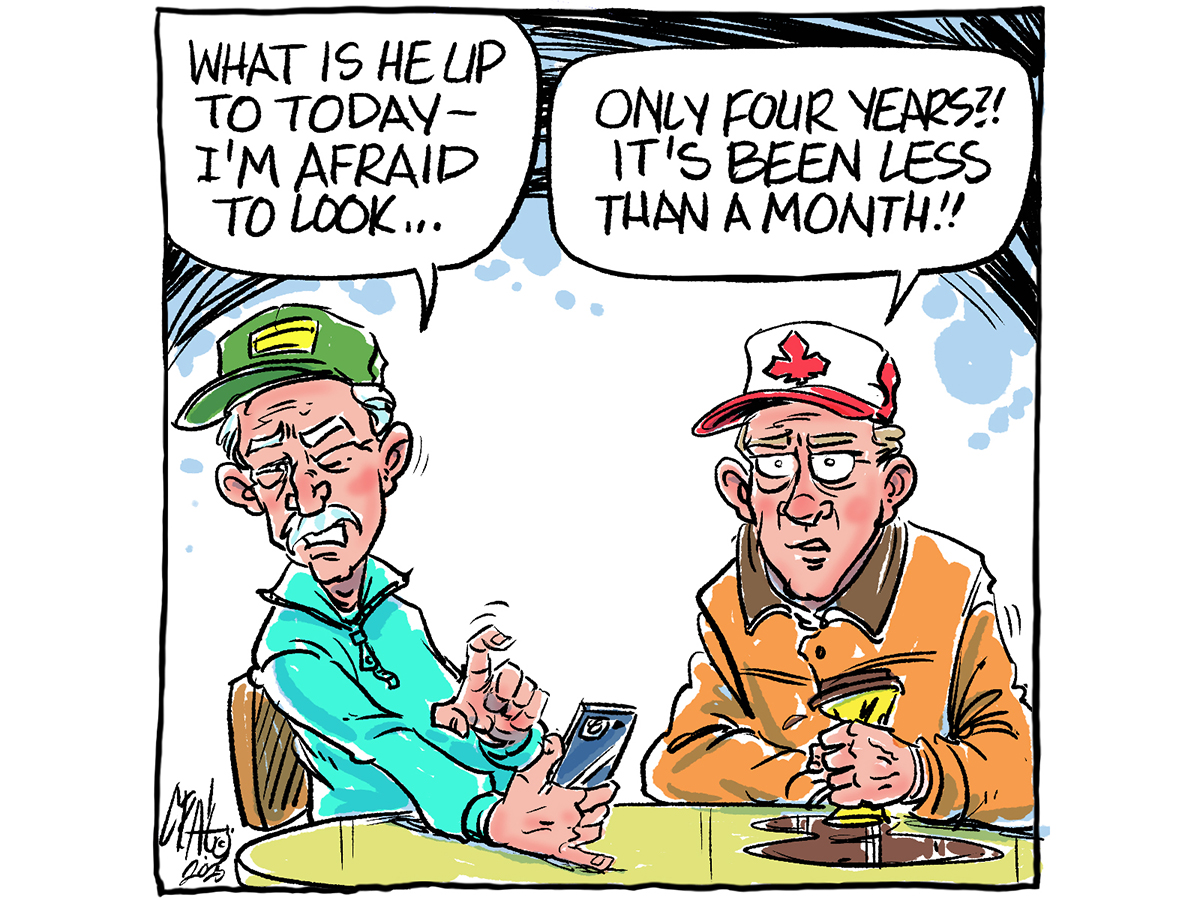The reason Canadian politicians are struggling to figure out U.S. President Donald Trump’s endgame is because he doesn’t have a grand strategy — other than his stated objective to make things so uncomfortable for Canadians that they join the United States.
As with his first administration, his policies are not designed with a comprehensive rigour.
Follow all our coverage of the tariffs situation here
Read Also

House ag committee to undertake several studies
The House of Commons standing agriculture committee has set its agenda for the coming months. Members began the fall sitting with a two-hour update on international trade
His whims were largely constrained in his first presidency by serious members of the Republican party, who have since been punted by Trump loyalists.
Now that the adults have left the room, the predictable, liberal trading environment that enabled the United States to become the most powerful economy in history is being walled off with tariffs.
Trump is not looking for a solution in the short term with Canada, which is evident by how he moves goalposts more often than a preschooler playing soccer.
But even if we reach an agreement with Trump, it would be impossible to feel confident that he’d abide by it.
He’s already ignoring the U.S.-Mexico-Canada Agreement he signed and then touted as the best agreement the U.S. ever made.
Uncertainty will be with us for the long haul when it comes to our relationship with the U.S. We shouldn’t hold our breath for saner heads to prevail south of the border.
Recent polls have Trump enjoying the highest approval rating he has ever seen as president.
Anecdotally, some U.S. farmers, including in the Grain Market Discussion Facebook group, are tickled with the idea of making Canadians suffer economically until we’re forced to be annexed.
Canadian agricultural products will soon be in Trump’s crosshairs because a significant trade imbalance has developed between the two countries.
Using the World Trade Organization definition of agricultural products, U.S. Department of Agriculture data shows that in 2020, the U.S. exported US$22.28 billion to Canada, which exported $25.32 billion to the U.S.
Since 2020, however, Canadian agricultural exports to the U.S. have skyrocketed.
In 2023, U.S. agricultural exports to Canada were $28.38 billion while Canada exported $40.14 billion to the U.S.
It’s unlikely such a significant trade imbalance for agricultural goods will remain in the future.
Team Canada is preparing for a trade war by compiling a list of U.S. products that will be subject to Canadian tariffs.
It’s important farmers pay close attention to how the federal and provincial governments respond to Trump’s attack on Canada to make sure the response isn’t detrimental to their farms.
For instance, more than 90 per cent of phosphorus applied in Canada comes from the U.S.
It’s unlikely our representatives would make such a critical element to the agriculture industry more expensive with a tariff, but this is just one example in a sea of trading relationships where Canadian farmers are vulnerable.
Canada must have a strong response to Trump’s aggression, but it is also important to prevent an escalation, if possible.
This is because it’s not possible for Canada to escape the gravity of the U.S. economy.
Instead, we must learn to become more transactional when trading with it.
We must also focus more on our trading partners outside of the U.S.
Instead of turning inward in these troubled times, Canada should continue to work toward becoming the kind of trading partner that we would want to deal with.
Karen Briere, Bruce Dyck, Robin Booker, Paul Yanko and Laura Rance collaborate in the writing of Western Producer editorials.

















